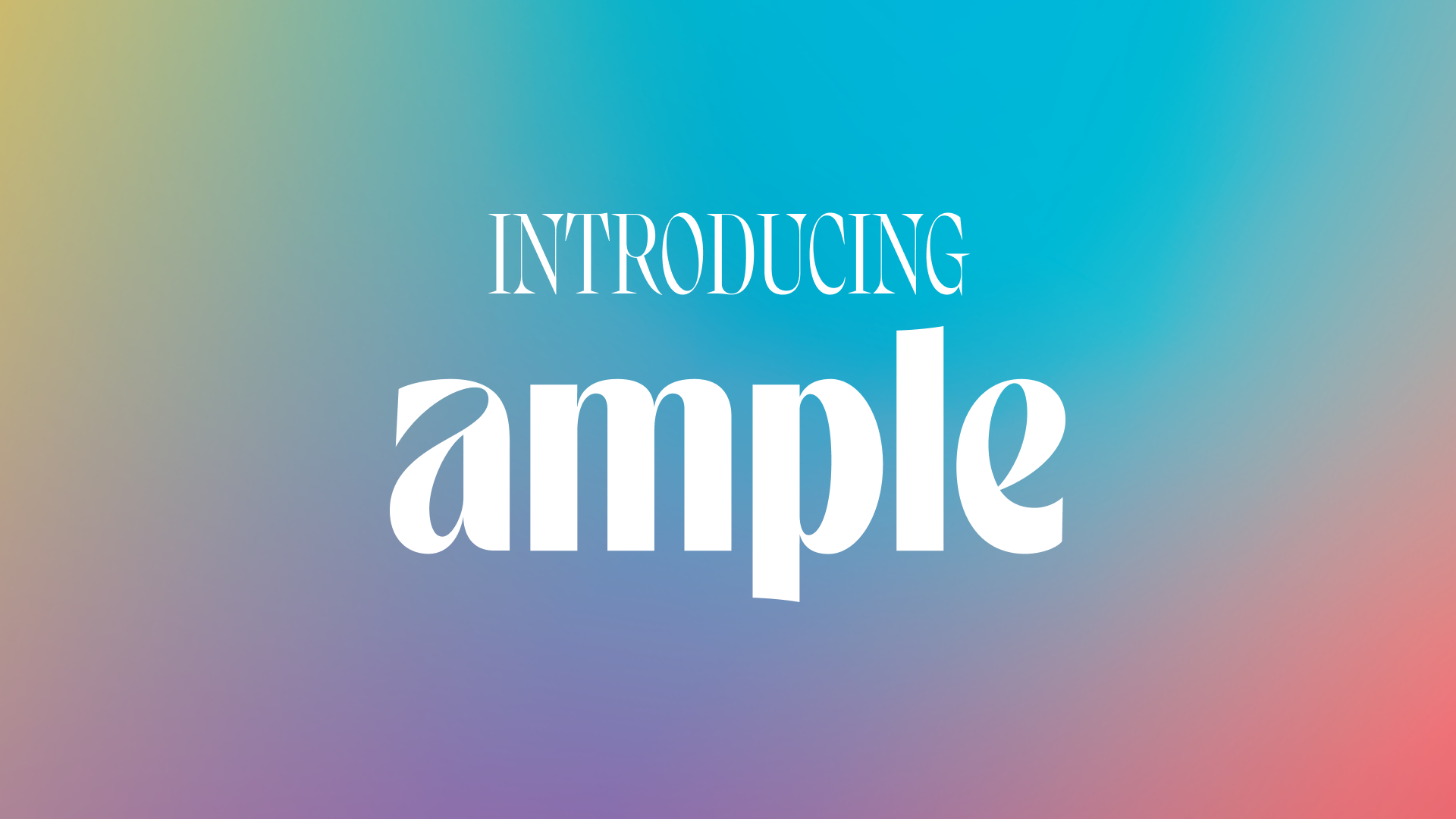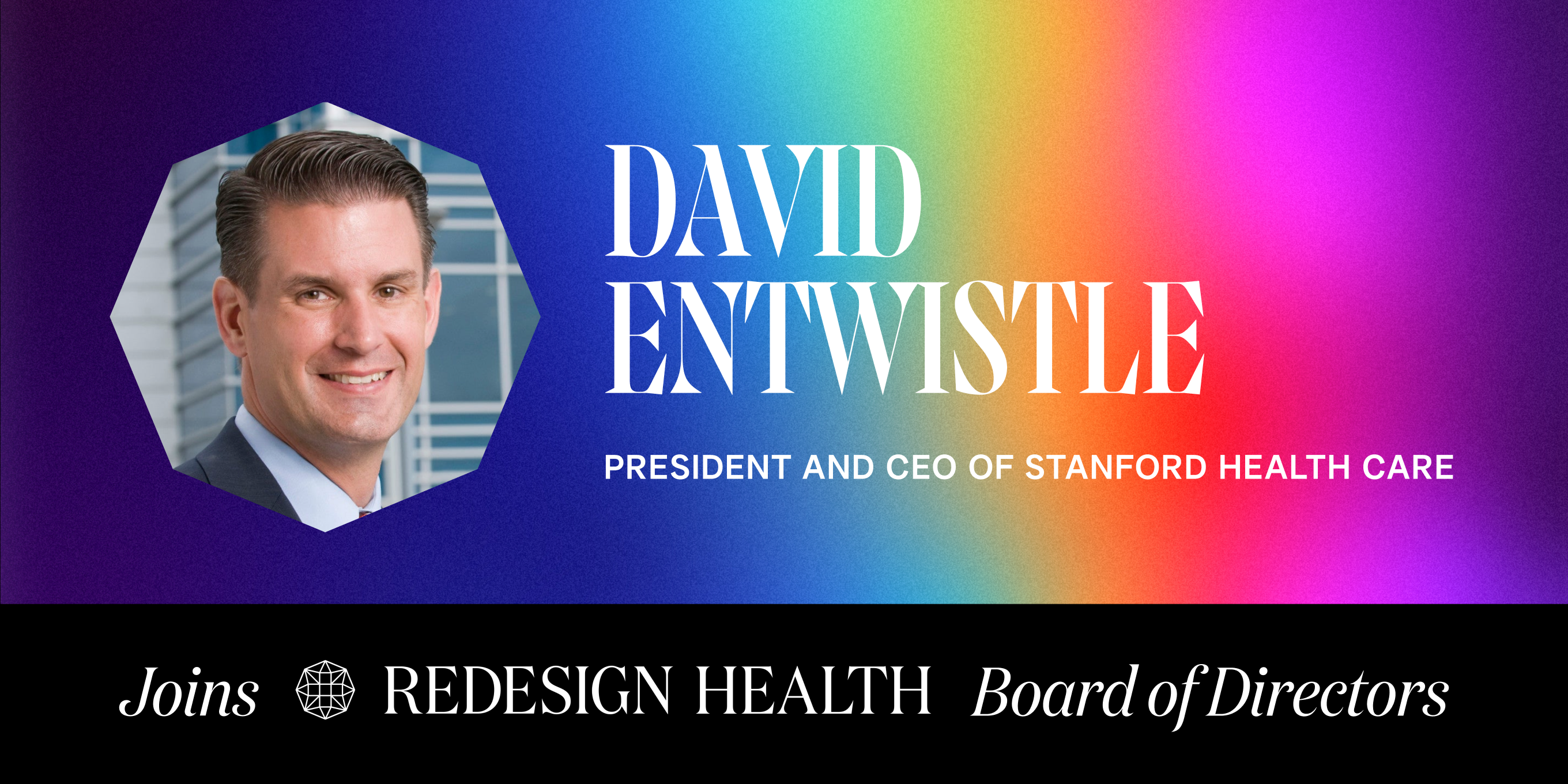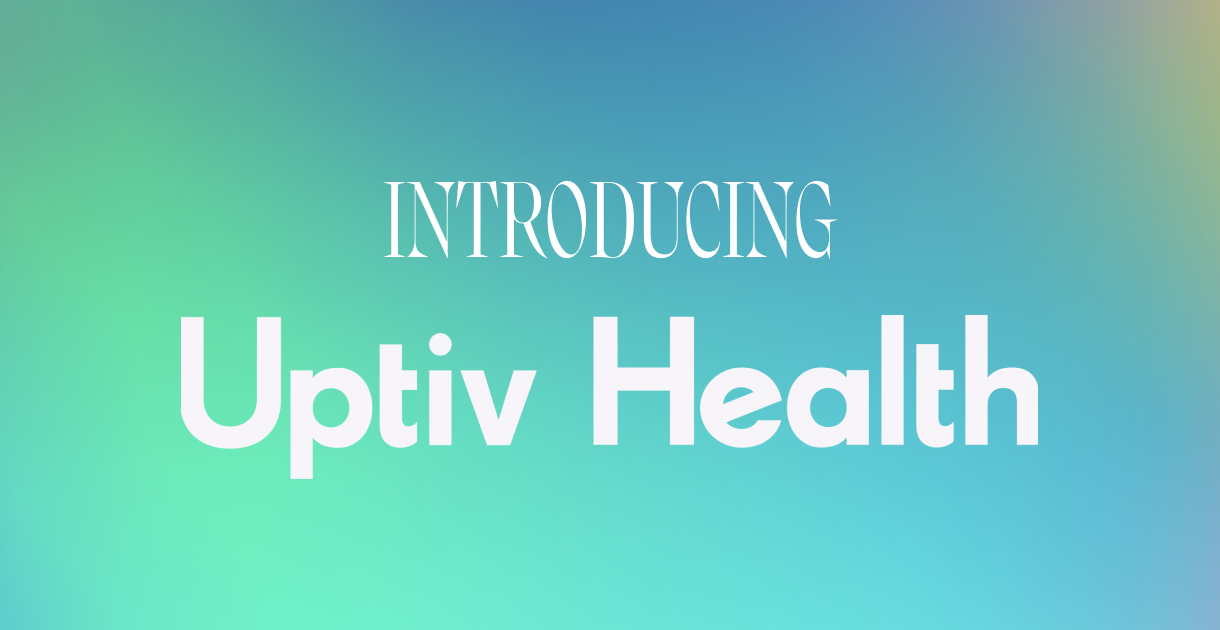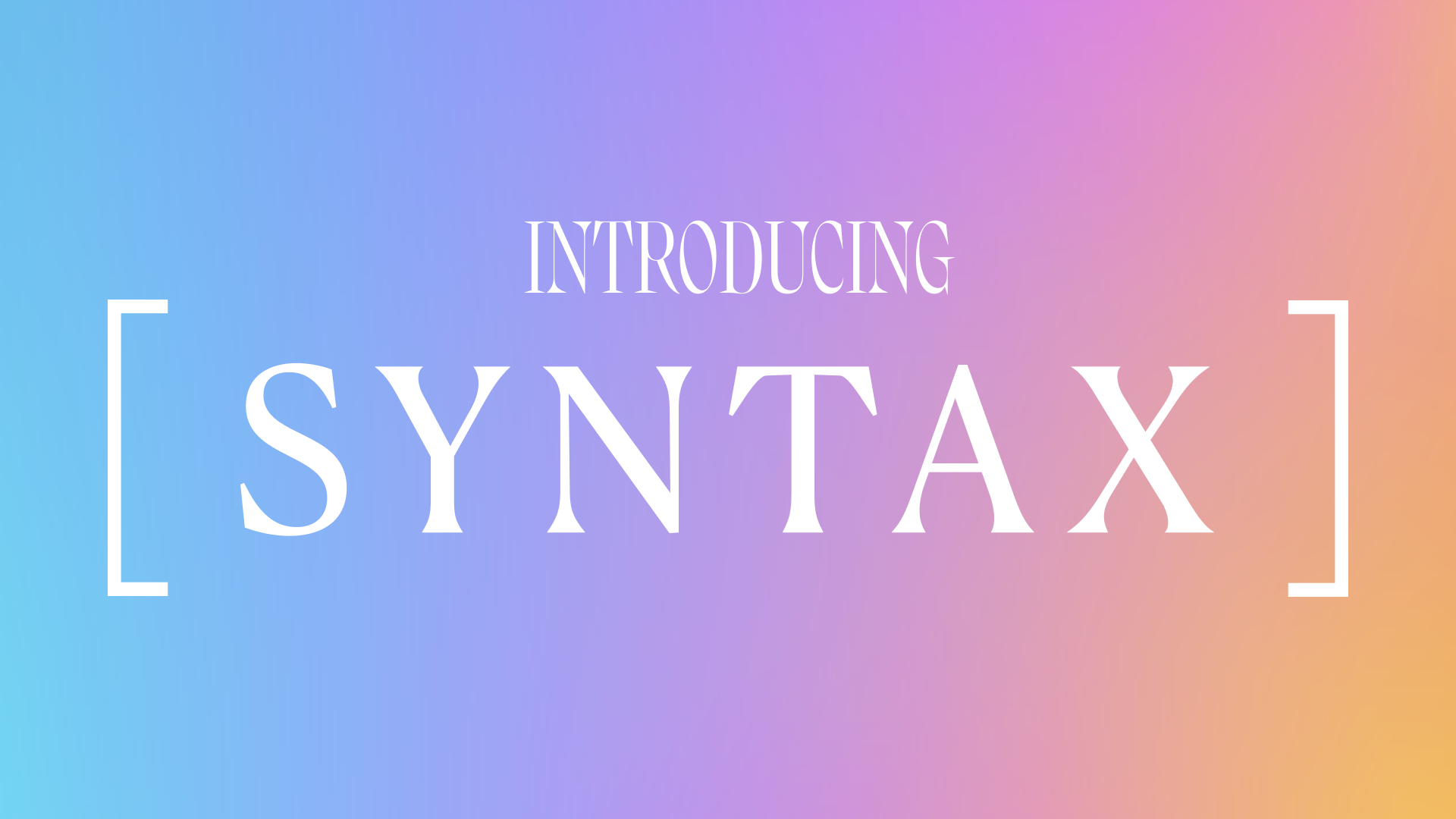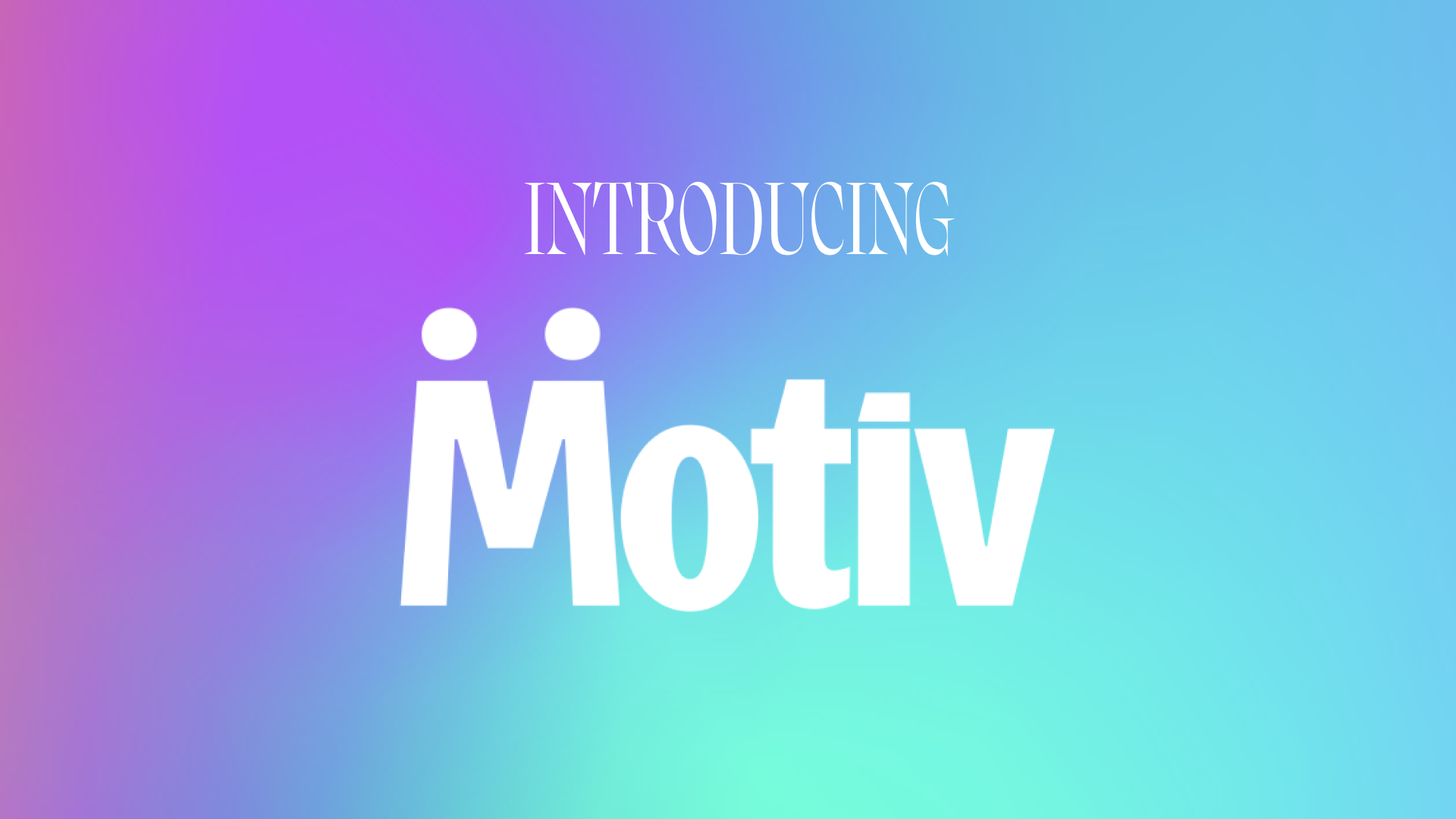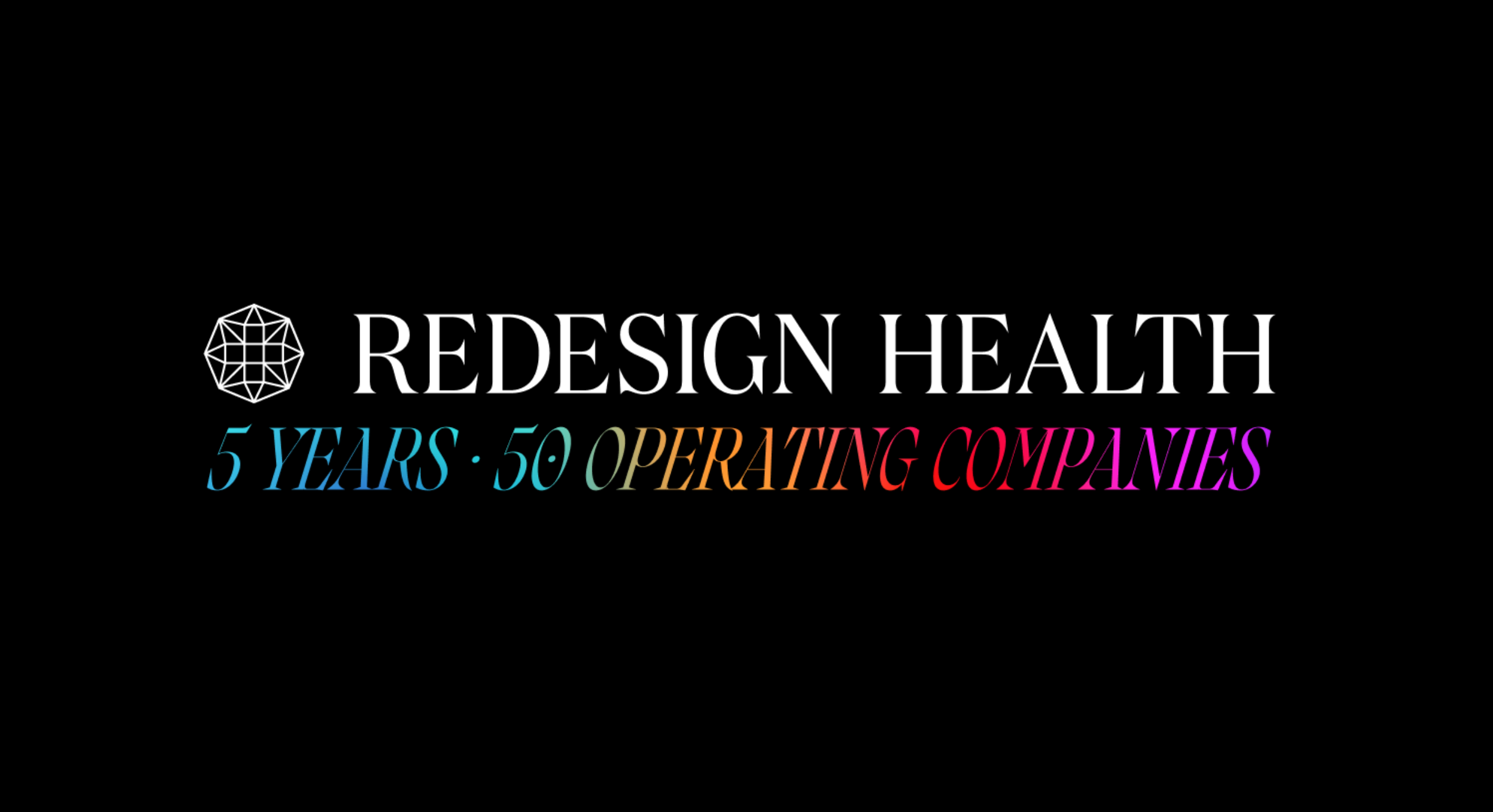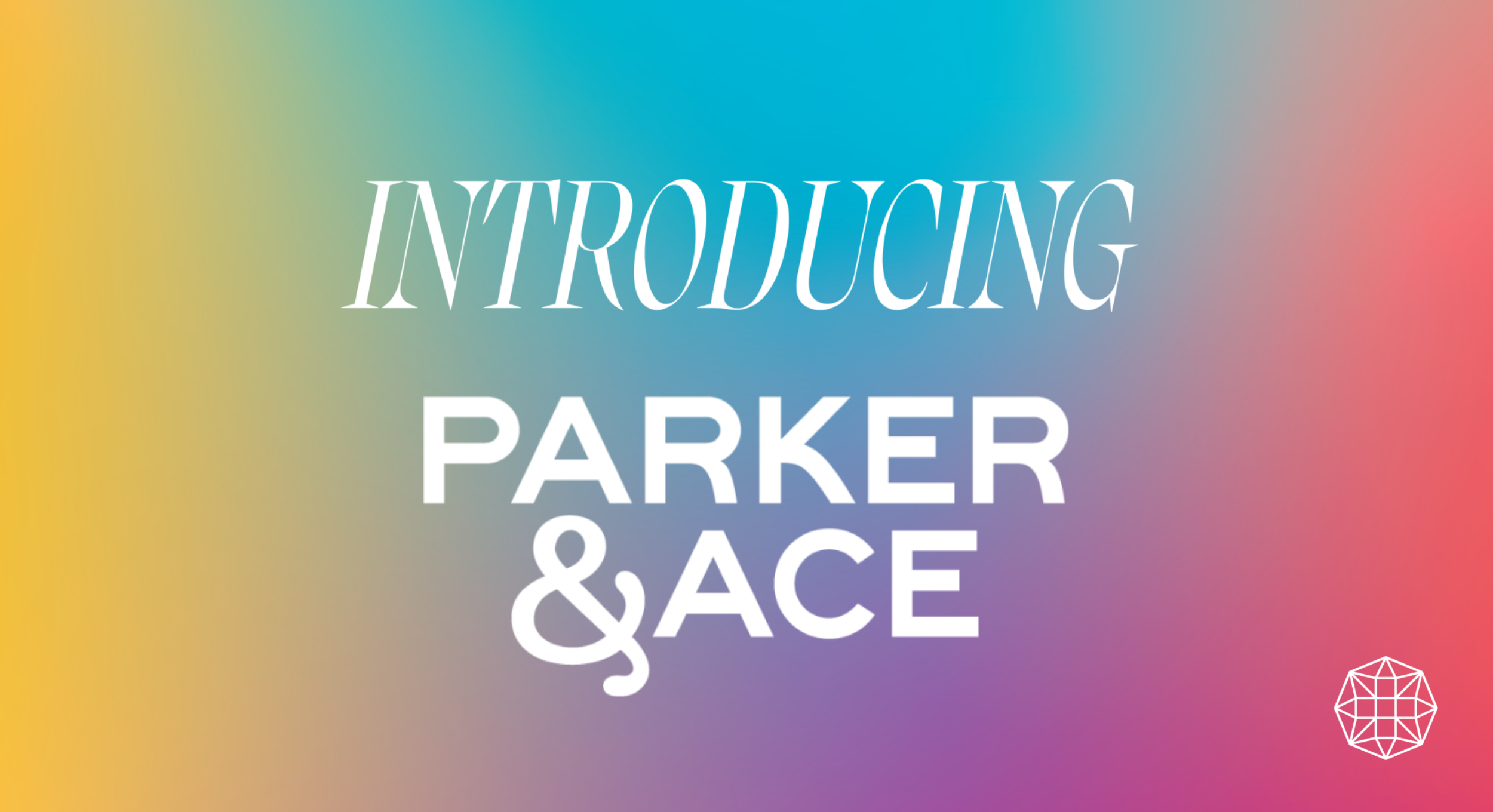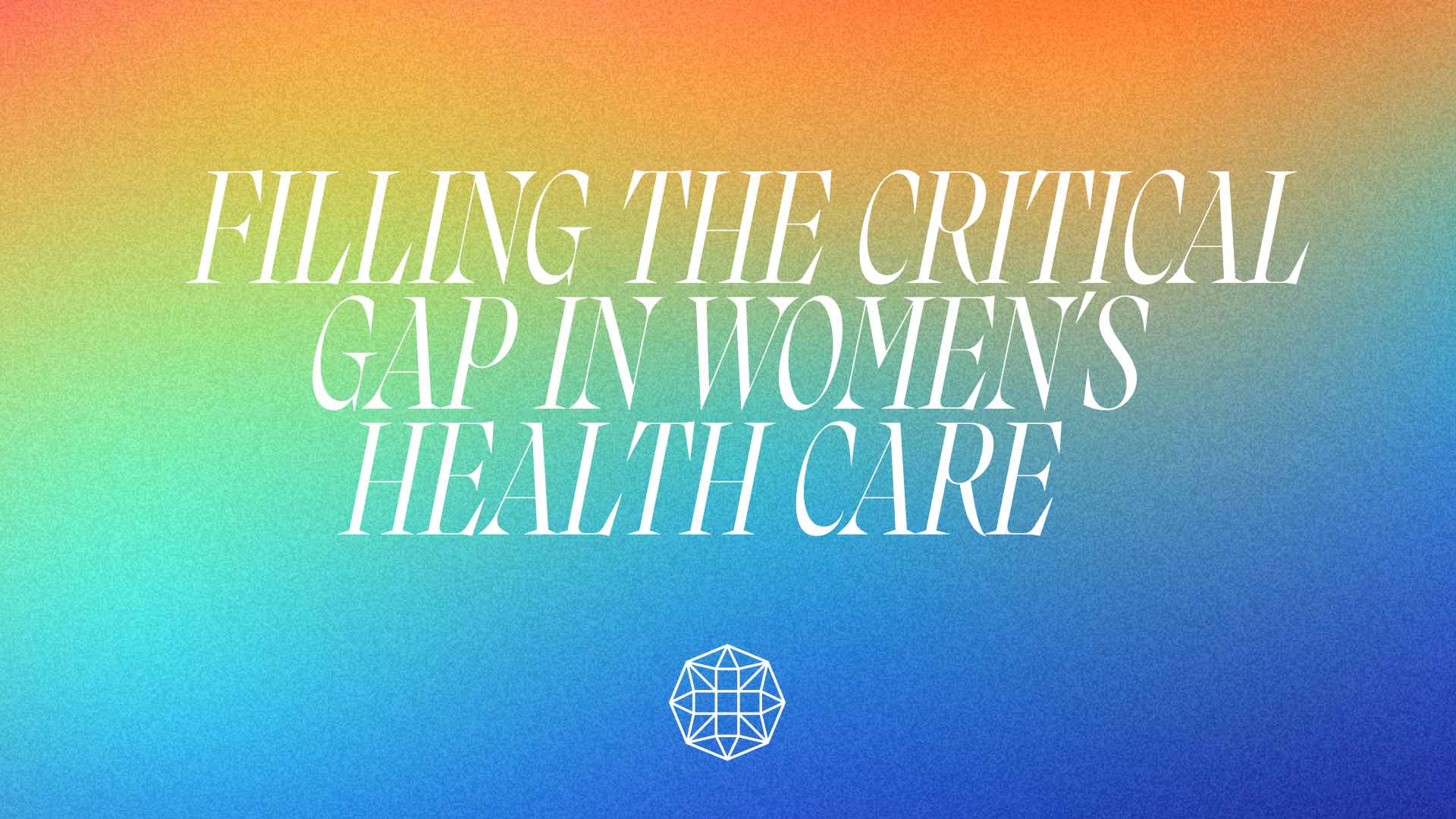
HLTH 2023: 6 Emerging Microtrends for Healthcare Innovators
From headliner speakers to hallway conversations, HLTH 2023 was full of insights on healthcare innovation. Redesign Health returned as a sponsor, bringing a full crew of Operating Company CEOs and advisors. Meanwhile, Kira Wampler, our Lead Venture Chair and Head of Startup Success, moderated a panel on how employers are responding to the financial impact of cancer.
Throughout the conference, we identified six microtrends that will shape the early-stage company landscape in the years to come:
1. Medicaid takes center stage
2. The ‘startup ecosystem’ is back in a big way
3. Founders and funders should put their money where the TAM is
4. AI, trust top payers’ concerns
5. Content is healthcare’s newest market
6. Innovation abounds in Remote Patient Monitoring (RPM) despite market shutdown
Read on for more of our team's takeaways.
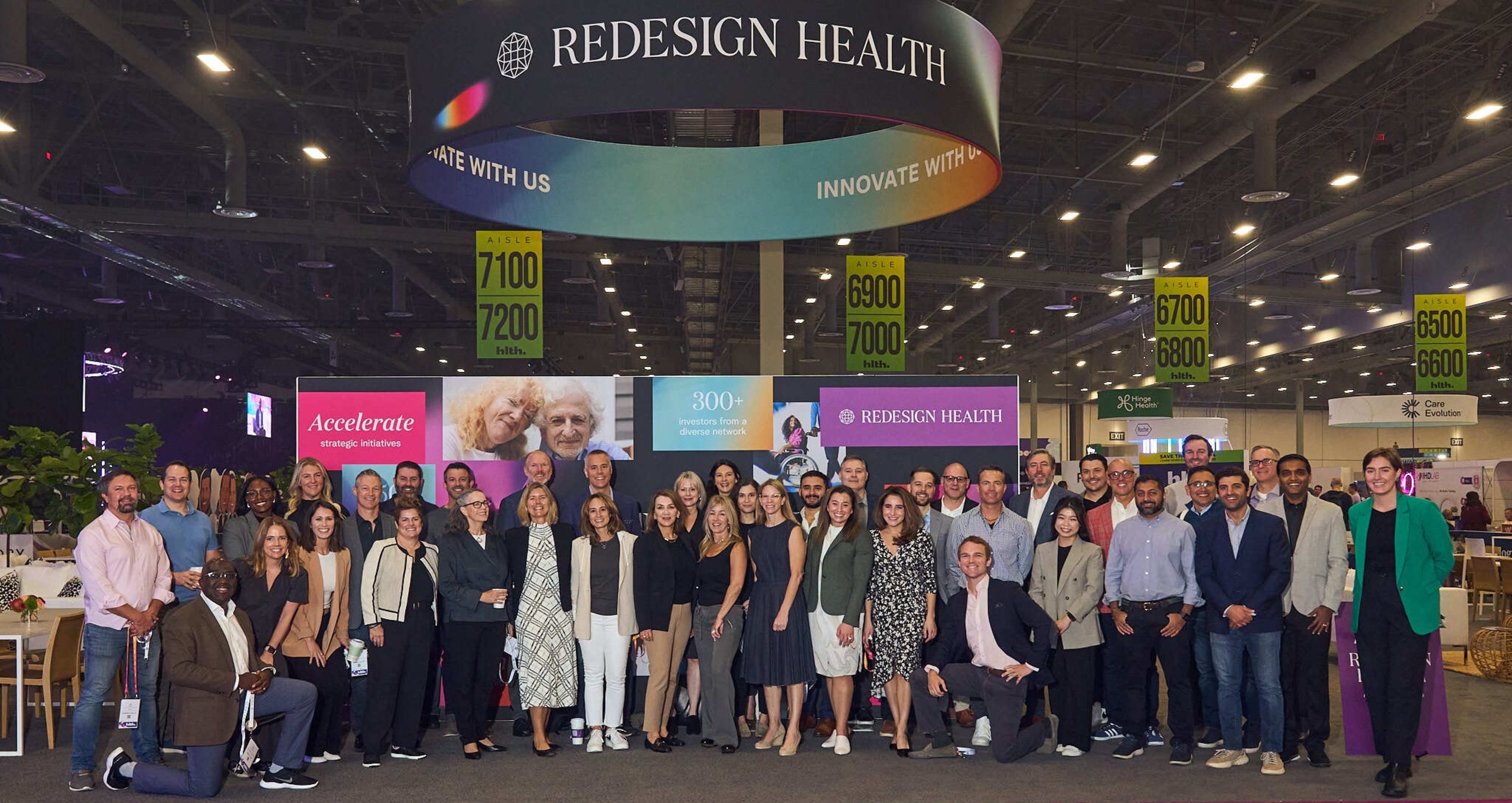
1. Medicaid takes center stage
This year, Medicaid not only had a seat at the HLTH table—it was the guest of honor. Some of the most interesting conversations centered on public calls to action for innovation in Medicaid.
In past years at HLTH, we saw growing consensus on the need to enhance care and equity in Medicaid populations. But this year, conference speakers leveraged their literal platforms to make the business case for building for Medicaid.
It’s widely accepted that low reimbursement rates and high costs of care typically squeeze Medicaid profit margins thin. But successful operators in this space now see that the real margin upside is created when people are healthier—that is, when they’re using preventive services and accessing care more frequently. Panel participants also encouraged innovators to look for opportunities to create long-term value, rather than trying to find arbitrage by exploiting poorly designed policies.
Social services vendors in the Food as Medicine space at HLTH echoed this commitment to creating a healthier Medicaid population in the long-term. They noted, for example, that the most effective Medically Tailored Meal (MTM) programs aren’t the ones that aim to retain members throughout their lives. Instead, they’re the ones that drive better health outcomes for each member by teaching them what accessible, healthy eating could look like.
2. The ‘startup ecosystem’ is back in a big way
In recent years, the healthcare community has recognized that solving the industry’s toughest problems takes a multi-stakeholder approach. This was apparent at HLTH as several trade organizations and government agencies unveiled new healthcare ecosystems. It’s encouraging to see the heavy hitters behind these efforts, including the Advanced Research Projects Agency for Health, the American Medical Association and the American Association of Retired Persons.
These hubs bring together founders, funders, researchers and other piloting institutions to accelerate the growth of innovative companies. This collaborative approach underlines the idea that new startups need adequate access to advisors and topical experts in order to succeed.
These new collaboratives also address a longstanding issue with startups that serve underrepresented populations. Founders in this space have been frustrated with the inability of government and research institutions to research lesser-funded verticals. These gaps have created a costly burden for startups to develop large swaths of industry knowledge. With stronger partnerships at play, startups won’t have to go it alone.
3. Founders and funders should put their money where the TAM is
Total addressable market (TAM) matters. That’s the message we heard from CEOs of mission-driven companies, especially in verticals like women’s health and health equity.
These leaders are tired of working with investors who underestimate the size of their market and therefore don’t see the need to back multiple solutions. For mission-driven founders, iIt’s disheartening to hear phrases like: “We’ve already completed our women’s health investment for the year,” and “We are looking to invest in one Social Determinants of Health (SDOH) business in this fund.”
The nuanced reality: Funds sometimes communicate a predetermined allocation mix to their investors and limited partners in advance. Still, founders’ frustrations are valid. History shows us that when a company solves for a large enough pain point, the market will follow.

4. AI, trust top payers’ concerns
During the Payer Insights programs, payers told a cautionary tale about the excitement around artificial intelligence (AI) and algorithms. They mentioned their dissatisfaction with both the adequacy of data collected and the quality of that data from an equity and representation standpoint. Because these same biased datasets feed AI algorithms, payers addressed fears that new AI care delivery models could make care less accessible for their members.
A second major takeaway was the importance of building trust and creating authentic dialogues among patients, community members and plan members. Payers are increasingly using community health workers and promotoras to build better relationships and break down information barriers.
5. Content is healthcare’s newest market
Plenty of behavioral health companies attended HLTH, but we noticed a key differentiator among newer startups and established players. The new entrants are adding online communities to their platforms, emphasizing visual or auditory storytelling forms over text-based narratives.
We also saw many product demos featuring video content generated in-house from companies focused on patient engagement, health literacy and reducing disparities. Because online communities are a key resource for underserved populations, the need for this type of content will likely only increase in the years to come.
Interestingly, some vendors at HLTH have already identified this need and are catering to it, acting as outsourced content creators for their customers. They’re driving education and engagement through short, digestible, gamified content and leveraging AI tools to modify content to match their patients’ literacy level.
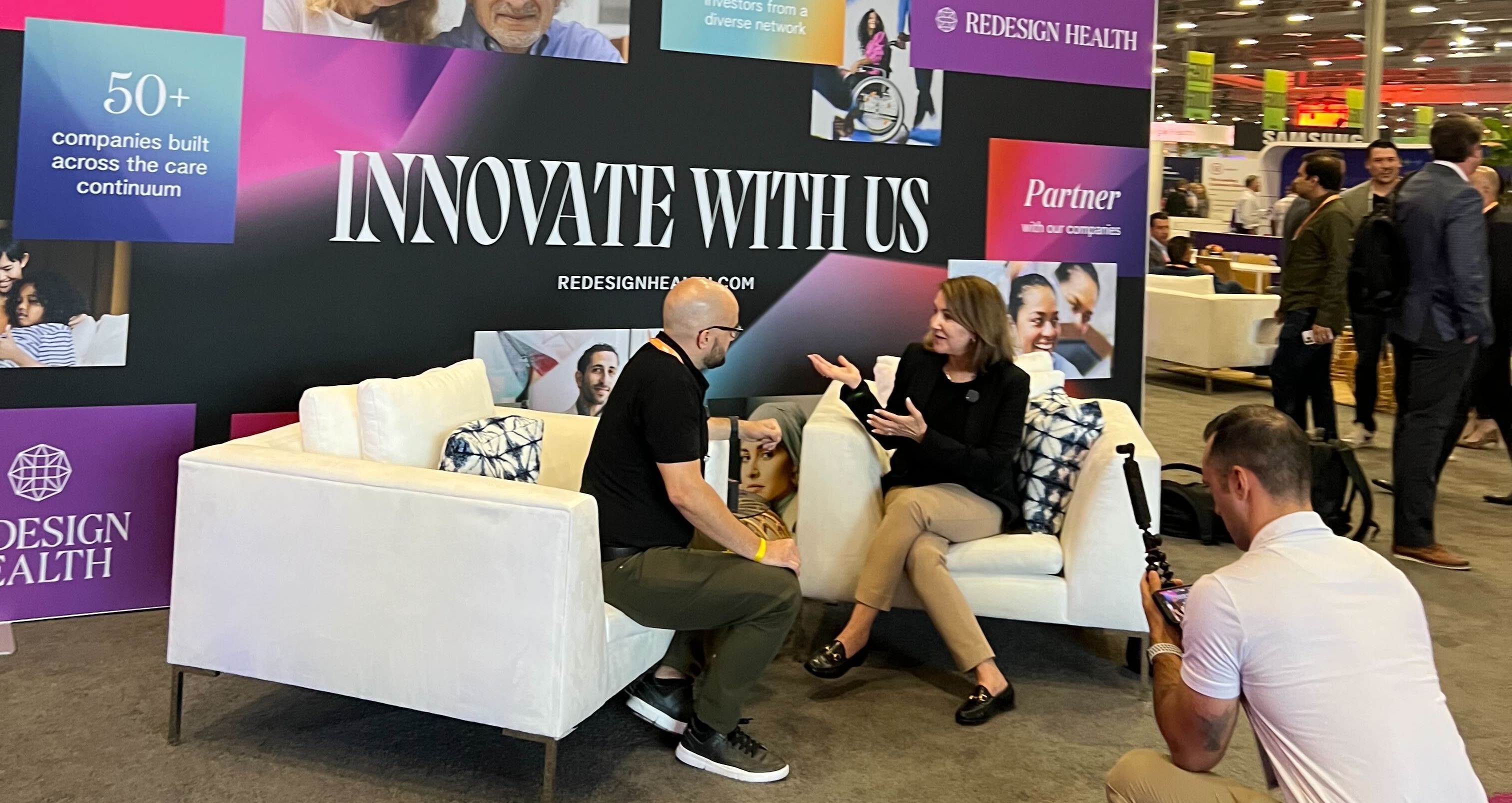
6. Innovation abounds in remote patient monitoring (RPM) despite market slowdown
While the RPM growth curve has abated slightly post-pandemic, plenty of innovators continue to reshape the space. Two examples we saw at HLTH included:
Low-cost, episodic wound care medical devices that serve as alternatives to point-of-care imaging services
Physical therapy monitoring technologies that leverage AI to help providers measure functional capabilities
It’s worth noting that many of these companies exist within unstable reimbursement landscapes—including uncertainties about the future of telemedicine policies and the availability of grants for financially struggling providers, such as Federally Qualified Health Centers.
Final thoughts
If there’s one other thing we learned at HLTH 2023, it’s that the relentless pursuit of innovation in our industry remains strong. We returned with fresh optimism about the role of startups in reshaping healthcare for all.
Interested in joining us? Explore our partners page for more information.
![No alternate text]() Redesign HealthMaking Comprehensive Care a Reality for Residents of Senior Living Communities
Redesign HealthMaking Comprehensive Care a Reality for Residents of Senior Living CommunitiesTroupe Health extends the reach of primary care physicians to improve health outcomes for older adults
April 09, 2024
![No alternate text]() Redesign HealthPioneering Specialist Physician Enablement:
Redesign HealthPioneering Specialist Physician Enablement:WindRose Acquires Company Built at Redesign Health
WindRose Acquires Company Built at Redesign Health
April 02, 2024
![No alternate text]() Redesign HealthIntroducing Redesign Health’s Newest Venture Chair
Redesign HealthIntroducing Redesign Health’s Newest Venture ChairLou Shapiro will leverage his four decades of healthcare and leadership expertise to guide Operating Companies at Redesign Health
March 26, 2024
![No alternate text]() Redesign HealthSix Takeaways on Healthcare Innovation from ViVE 2024
Redesign HealthSix Takeaways on Healthcare Innovation from ViVE 2024Redesign Health attended ViVE 2024 in Los Angeles. We're sharing the six key takeaways our team observed on what’s driving the industry forward.
March 11, 2024
![No alternate text]() EndocrinologyRedesign HealthInvesting in the Future of Diabetes Care
EndocrinologyRedesign HealthInvesting in the Future of Diabetes CareWith a combination of insights, technology and care, Valendo Health empowers independent endocrinologists to grow their practices
March 05, 2024
![No alternate text]() Redesign HealthRewriting the Script on Comprehensive Medication Management
Redesign HealthRewriting the Script on Comprehensive Medication ManagementScriptology combines an extended clinical pharmacy team with technology, creating proven benefits for patients, providers and payers
February 21, 2024
![No alternate text]() Redesign Health2023 Redesign Health Recap
Redesign Health2023 Redesign Health RecapAs we wrap up the year, here's a recap of some of our most exciting moments.
December 14, 2023
![No alternate text]() DementiaRedesign HealthBridging the Gaps in Dementia Care for Providers, Patients and Caregivers
DementiaRedesign HealthBridging the Gaps in Dementia Care for Providers, Patients and CaregiversHarmonic Health leverages technology and expertise to create a new evidence-based dementia care model.
November 21, 2023
![No alternate text]() Redesign HealthReshaping the Hair Restoration Journey
Redesign HealthReshaping the Hair Restoration JourneyAmple combines clinical expertise and personalized care to make hair restoration approachable and empowering.
November 02, 2023
![No alternate text]() Redesign HealthUnlocking Innovation: The Power of Strategic Partnerships in Healthcare
Redesign HealthUnlocking Innovation: The Power of Strategic Partnerships in HealthcareAt the 2023 Re View Summit, we brought together industry experts from across the healthcare landscape for a discussion that explored how startups can more effectively partner with incumbents. Here are their insights.
October 26, 2023
![No alternate text]() Redesign HealthUnleashing the Power of Generative AI and LLMs in Healthcare: Insights from Industry Experts
Redesign HealthUnleashing the Power of Generative AI and LLMs in Healthcare: Insights from Industry ExpertsAt the 2023 Re View Summit, AI Panelists explored how CEOs can get started, viable opportunities within the market and what investors and health systems are seeking when it comes to practical solutions.
October 24, 2023
![No alternate text]() Redesign HealthHLTH 2023: 6 Emerging Microtrends for Healthcare Innovators
Redesign HealthHLTH 2023: 6 Emerging Microtrends for Healthcare InnovatorsWe're sharing the six microtrends we kept hearing about at HLTH 2023 that we expect to shape the early-stage company landscape in the years to come.
October 18, 2023
![No alternate text]() CEORedesign HealthFrom Startups to Scaling: Key Takeaways from the 2023 Re View Summit
CEORedesign HealthFrom Startups to Scaling: Key Takeaways from the 2023 Re View SummitDuring our recent Re View Summit, we gathered 40+ CEOs from the Redesign Health community to tackle some of the most pressing issues in healthcare through panels, workshops and networking. Here are some of the highlights.
October 12, 2023
![No alternate text]() CardiologyRedesign HealthUnlocking the Full Potential of Independent Cardiology Practices
CardiologyRedesign HealthUnlocking the Full Potential of Independent Cardiology PracticesCardiology care delivery enablement platform CardioOne builds early momentum through partnerships with independent cardiology practices and MedAxiom.
October 03, 2023
![No alternate text]() Redesign HealthDavid Entwistle, President and CEO of Stanford Health Care, Joins Redesign Health Board of Directors
Redesign HealthDavid Entwistle, President and CEO of Stanford Health Care, Joins Redesign Health Board of DirectorsWe’re thrilled to welcome David Entwistle, President and CEO of Stanford Health Care, to our Board of Directors.
August 17, 2023
![No alternate text]() Chronic CareRedesign HealthInfusing Innovation Into Care for Chronic Illnesses
Chronic CareRedesign HealthInfusing Innovation Into Care for Chronic IllnessesUptiv Health transforms the transactional treatment model centered on pharmaceutical support to one that’s focused on the whole person, empowering patients while prioritizing their health and well-being.
August 10, 2023
![No alternate text]() Mental HealthRedesign HealthMaking a Clinical Impact: UpLift's Integrated Behavioral Health Model Increases Access to High-Quality Psychotherapy and Psychiatry
Mental HealthRedesign HealthMaking a Clinical Impact: UpLift's Integrated Behavioral Health Model Increases Access to High-Quality Psychotherapy and PsychiatryEarly traction secures $10.7M in Series A funding and a new Medicaid MCO partnership that will form a first-of-its-kind clinically integrated network (CIN) to expand behavioral healthcare access for Medicaid members in Washington, D.C.
August 08, 2023
![No alternate text]() CaregivingRedesign HealthModernizing the Caregiving Experience
CaregivingRedesign HealthModernizing the Caregiving ExperienceWe’re proud to introduce a groundbreaking platform designed to meet caregivers’ unique challenges.
August 01, 2023
![No alternate text]() Healthcare LaborRedesign HealthReimagining the Healthcare Labor Pool Through Innovation
Healthcare LaborRedesign HealthReimagining the Healthcare Labor Pool Through InnovationIn our latest blog post, we look at trends shaping the imbalance of healthcare staffing supply and demand and explore the ecosystem of Operating Companies at Redesign Health that we’ve built to help health systems ease the labor crisis.
July 28, 2023
![No alternate text]() Value-Based CareRedesign HealthBreaking Down Barriers to Value-Based Care Contracting: Simplifying the process through collaboration, real-time insights and comprehensive data
Value-Based CareRedesign HealthBreaking Down Barriers to Value-Based Care Contracting: Simplifying the process through collaboration, real-time insights and comprehensive dataSyntax is an enterprise SaaS platform that simplifies and demystifies how contracts are created and completed for all parties involved. With Syntax, teams can obtain a full view into what a value-based contract will look like in practice.
July 18, 2023
![No alternate text]() Cardiac CareRedesign HealthExpanding Access to Cardiac Rehabilitation with Whole-Person, At-Home Care
Cardiac CareRedesign HealthExpanding Access to Cardiac Rehabilitation with Whole-Person, At-Home CareEach year, more than 1 million Americans become eligible for cardiac rehabilitation. We’re thrilled to launch a new company designed to reshape the way patients receive cardiac rehabilitation.
June 15, 2023
![No alternate text]() Redesign HealthRedesign Health: A 5-Year Milestone of Innovation & Impact
Redesign HealthRedesign Health: A 5-Year Milestone of Innovation & ImpactAs we stand at the cusp of the next wave of change, we wanted to look back on what we’ve done so far and share where we — and the industry — are going next.
May 31, 2023
![No alternate text]() Redesign HealthCelebrating Five Years of Redesigning Health for Everyone
Redesign HealthCelebrating Five Years of Redesigning Health for EveryoneFive years ago, we realized the only way to create real change in healthcare is at scale. Now, we’re proud to have powered the launch of more than 50 healthcare companies.
April 20, 2023
![No alternate text]() Redesign HealthRedefining Pet Care for Modern Pet Parents and Veterinarians
Redesign HealthRedefining Pet Care for Modern Pet Parents and VeterinariansToday’s pet owners don’t just adopt animals—they treat them as members of their family.
April 12, 2023
![No alternate text]() Our Key Takeaways from ViVE 2023
Our Key Takeaways from ViVE 2023Redesign Health attended ViVE 2023 in Nashville last week, where Redesigners and leaders from our Operating Companies connected with industry innovators and attended thought provoking panel discussions.
April 03, 2023
![No alternate text]() Lesley SolomonFilling the Critical Gap in Women’s Health Care
Lesley SolomonFilling the Critical Gap in Women’s Health CareWomen in the United States are facing a troublesome, fragmented patchwork of care options, caused by a variety of challenges.
February 28, 2023
![No alternate text]() 2022 Year in Review
2022 Year in ReviewIt was an exciting year for Redesign Health!
December 19, 2022
![No alternate text]() HLTHRedesign HealthOur Key Takeaways from HLTH 2022
HLTHRedesign HealthOur Key Takeaways from HLTH 2022Redesign Health attended HLTH 2022 in Las Vegas last week, where Redesigners and leaders from our Operating Companies connected with industry innovators and attended thought provoking panel discussions.
November 21, 2022
![No alternate text]() Redesign HealthOur Biannual Redesign Health Cares Day
Redesign HealthOur Biannual Redesign Health Cares DayLast week, Redesign Health held its Redesign Health Cares Day in celebration of World Kindness Day on November 11.
November 17, 2022
![No alternate text]() PartnershipsRedesign HealthPartnering With Leading Children's Hospitals to Identify and Build Innovative Pediatric Healthcare Solutions
PartnershipsRedesign HealthPartnering With Leading Children's Hospitals to Identify and Build Innovative Pediatric Healthcare SolutionsAt Redesign Health, we firmly believe the US healthcare system desperately needs innovation to address our lagging health outcomes, sky-high costs and uneven access to care.
November 03, 2022
![No alternate text]() Redesign HealthRedesign Health at HLTH 2022
Redesign HealthRedesign Health at HLTH 2022We are excited to share that Redesign Health team members and leaders from a number of our Operating Companies will attend HLTH in Las Vegas later this month.
November 02, 2022
![No alternate text]() CEORe View Summit Recap
CEORe View Summit RecapWe recently brought together 30+ of our founding CEOs and Venture Chairs for the inaugural Re View Summit, a two-day event focused on the best practices for successfully scaling businesses.
September 29, 2022
![No alternate text]() Redesign HealthOur Mission to Redesign Health for Everyone
Redesign HealthOur Mission to Redesign Health for EveryoneRedesign Health powers innovation in healthcare by developing technologies, tools, and insights that lower the barriers to change across the industry. Since 2018, exceptional founders have built over two dozen companies at Redesign Health.
September 13, 2022
![No alternate text]() Redesign HealthAmbition and Urgency Shape the New Redesign Health Brand
Redesign HealthAmbition and Urgency Shape the New Redesign Health BrandOur new brand is the culmination of conversations with people from all levels of the organization — those who have been with Redesign since the beginning to people who just walked in the door. We listened to founders, partners, and industry experts.
April 21, 2022








